| Transport in Plants Refresher Course |
| Transport in Plants Concepts Files |
| Transport in Plants Master Files |
| Transport in Plants Notes 1 |
| Transport in Plants Reference |
| Transport in Plants Revision Note |
Transport in Plants
Table of content
- Means of Transport or Translocation of Solutes
- Difference between Transport processes
- Plant Water Relations
- Long distance Transport of Water
- Water movement up the plant
- Transpiration
- Uptake and Transport of Mineral Nutrients
Transport in Plants
The process of Transport in Plants via xylem and phloem is known as Translocation. It includes Transport of water, minerals as well as solutes.
Means of Transport or Translocation of Solutes
There are basically three means of Transport in Plants:
- Diffusion is the most common means of Transport in Plants. It is defined as the movement of molecules from the region of high concentration to the region of low concentration without the need of the energy. So, diffusion is a passive process. Concentration gradient, temperature, and pressure affect the rate of diffusion.
- Facilitated diffusion is the Transport process brought about by certain proteins known as permeases. It is also a passive process. When all the protein available for Transport is saturated, Transport reaches maximum. It is a specific process that allows only certain molecules to pass. Porins and aquaporins are protein that helps in facilitated diffusion. Porins are pores present in cell organelles such as mitochondria, plastids, and even in some bacterial cells. Aquaporins are water channels that Transport water molecules.
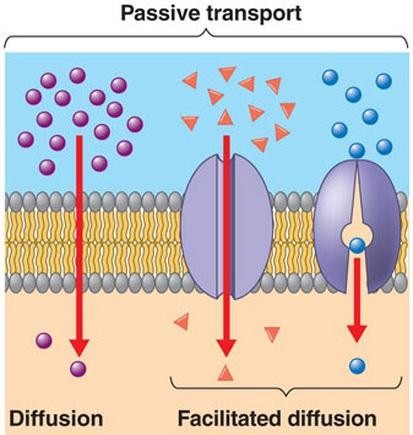
Fig.1. Passive Transport
Facilitated diffusion can occur by the following process-
- Symport is the Transport of more than one molecule in the same direction.
- Antiport is the Transport of molecules in opposite direction.
- Uniport is the Transport of single molecules in any direction.
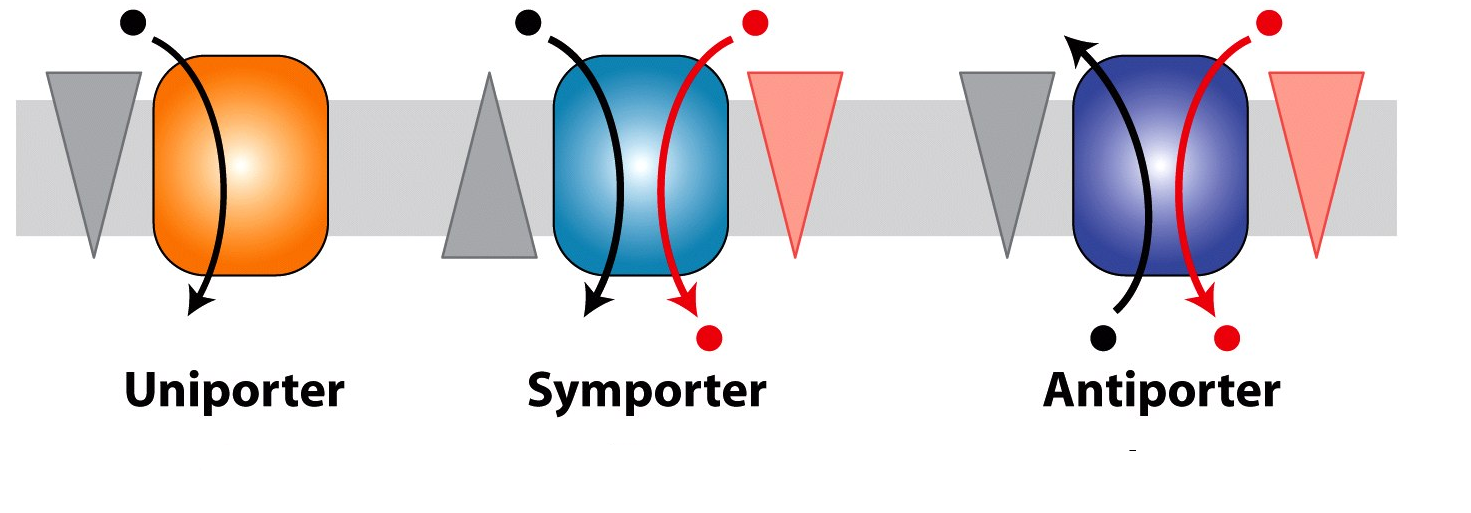
Fig.2. Types of facilitated Transport
- Active Transport in Plants requires expenditure of energy for the Transport of molecules. It can Transport solutes from the region of low concentration to the region of high concentration and vice versa. Membrane proteins are involved in active Transport. It is a specific mode of Transport of solutes.
Difference between Transport processes

Fig.3. Difference between different Transport processes
Plant Water Relations
Water is essential for the growth of the Plants. But excess or less water is harmful for the Plants. Terrestrial Plants lose some amount of water from the aerial parts of the Plants in the form of water vapor is known as transpiration.
Water Potential
The measure of potential energy of water is known as water potential. Solute potential and pressure potential determines the water potential of the cell. Pure water has the highest water potential. Water always moves from higher water potential to lower water potential. Water potential is denoted by a symbol psi or Ψ. The unit used to express water potential is Pascals.
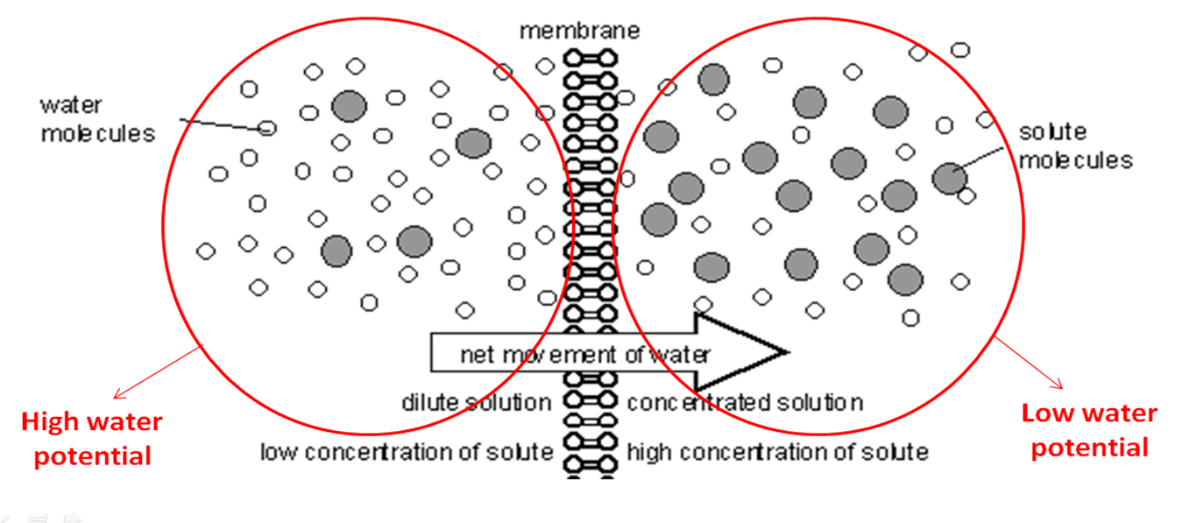
Fig.4. Water Potential
If some solute is added to pure water, the water potential drops to negative. This is known as solute potential. It is represented by symbol Ψs. If pressure is greater than the atmospheric pressure in case of pure water, water potential increases. From Fig.4. it is clear that water moves from a region of high water potential to a region of low water potential or from dilute solution to concentrated solution.
When water enters the plant cell, pressure develops inside the cell against the cell wall making its more turgid. This raises the pressure potential. So, the relationship between water potential, solute potential and pressure potential are as follows-

Fig.5. Relation between different potentials
Osmosis
It is defined as the process of movement of water molecules across the semi-permeable membrane. The movement of water depends on concentration gradient and pressure gradient.
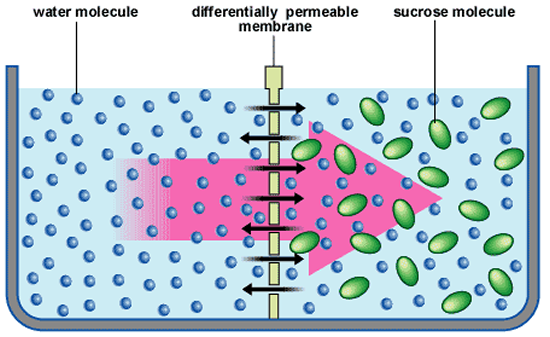
Fig.6. Osmosis
The movement of water molecules occurs till the equilibrium reaches between the two solutions. The pressure applied to prevent the net movement of solute molecules across the membrane is known as osmotic pressure. Osmosis is essential for the movement of molecules such as ions, proteins, and polysaccharides across the membranes.
Plasmolysis
The behavior of the plant cells chances with respect to the external medium. If the osmotic potential of the plant cell is same as that of external medium, the solution is considered Isotonic Solution. If the osmotic potential is more outside the cell with respect to inside the cell, the solution is said to be Hypertonic Solution. If solute potential is more inside the cell as compared to outside the cell, the solution is said to be Hypotonic Solution.
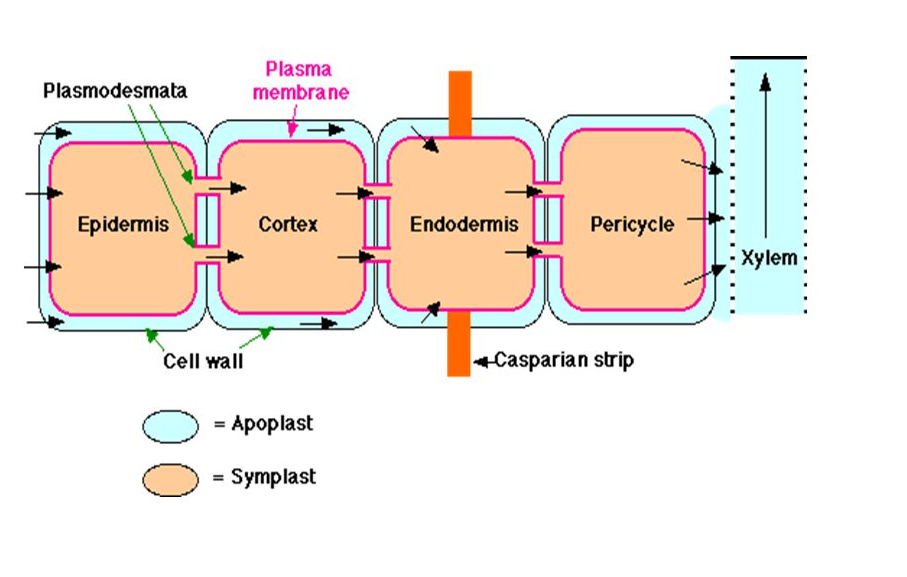
Fig.7. Types of Osmotic Solution
Hypertonic solution results in movement of water molecules outside the cell. The cell is known as flaccid. When a cell is kept in hypotonic solution, the water moves inside the cell. The cell is said to be turgid. The process of shrinkage of the cell wall when a plant cell is kept in hypertonic solution, thus water moves out of the cell. This is known as plasmolysis.
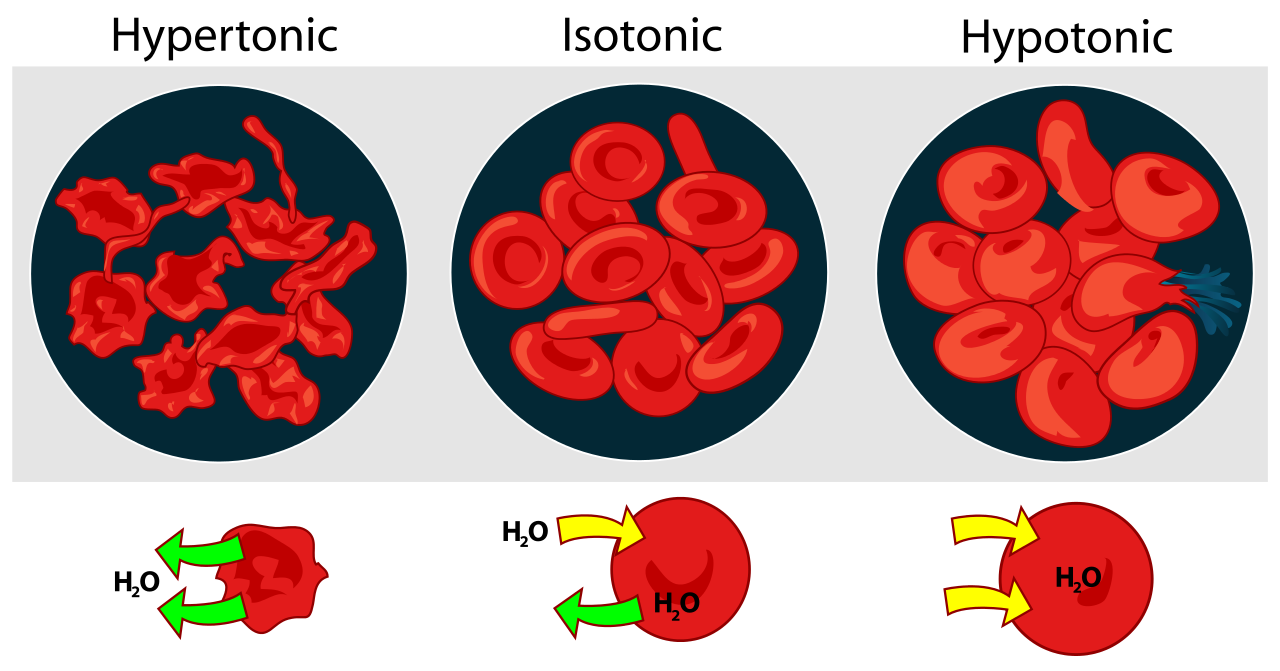
Fig.8. Plasmolysis
Imbibition
The absorption of water by solids, causing them to become enlarge in size is known as imbibition. The swelling of raisins when kept in water is the most common example of imbibition. This is considered like diffusion as water is moving from high concentration to low concentration, that is, along the concentration gradient.
Long distance Transport of Water
Long distance Transport is the faster mode of Transport of water. Generally, water, food and minerals move by bulk flow or mass flow. Mass flow occurs between the two solutions separated by a pressure.
The movement of substances though the vascular tissues of the Plants, is known as translocation. Vascular tissues include xylem and phloem. Xylem helps in movement of water molecules from roots to different parts of the plant. Phloem helps in the movement of food from the leaves to different parts of the Plants.
Different pathways of Water Absorption
Plants absorb water from the roots. Roots contain root hairs that are mainly involved in absorption of water and minerals from the soil. There are two pathways for the movement of water from the roots to different parts of the plant. These pathways are as follows-
- Apoplast pathway involves the movement of water in the non-living parts of the Plants such as intercellular spaces and cell wall. The endodermis interrupts this pathway. Endodermis is covered by casparian strips that prevents the movement of water. It do not involve the movement of water via cell membrane.
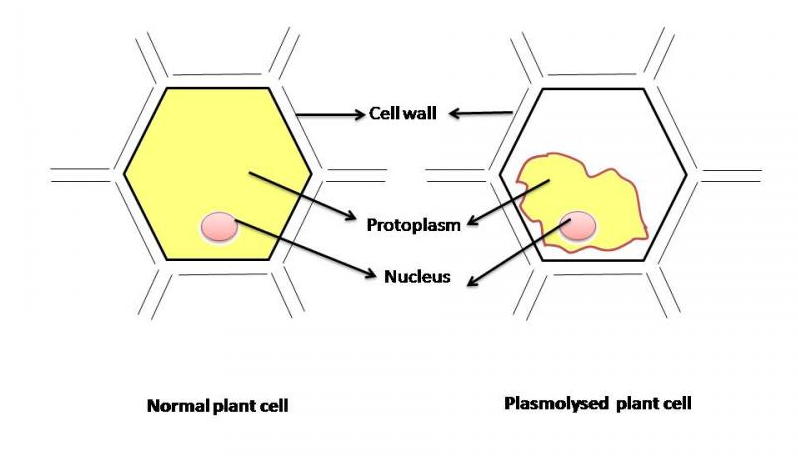
Fig.9. Pathways of water movement
- Symplast pathway is the movement of water via protoplasts with the help of the cell to cell connections known as plasmodesmata. It helps in the direct movement from cytoplasm to cytoplasm. This process occurs slowly as compared to apoplastic pathway of water movement.
Some Plants such as Pinus have different structures for the absorption of water, known as Mycorrhiza. Mycorrhiza are the fungal association between the fungus and the roots of the higher Plants. It is a symbiotic relation between the fungus and the roots of the Plants. The fungal hyphae help in absorption of mineral ions and water from the soil whereas the roots provide sugars and N-containing compounds to the roots of the Plants.
Water movement up the Plant
Root pressure and transpiration pull are the two forces that helps in water movement up the Plants.
- Root pressure arises when ions present in the soil are actively Transported into the vascular tissues of the roots, which results in positive pressure inside the roots. This pressure is known as the root pressure which drives upward movement of water. Root pressure is observed when a stem is cut horizontally from the base. A liquid will ooze out from the cut stem. The effect of root pressure can also be observed during night time. When rate of evaporation is low, excess water in the form of water droplets is observed near the tips of the leaves. This is known as guttation.
- Transpiration pull is the driving force for upward movement of water. Cohesion-tension theory was given by Dixon and Jolly, to explain the upward movement of water in the Plants. Cohesion is the attraction between the water molecules. Adhesion is the attraction between the water molecules and other polar molecules. Another property that promotes transpiration pull is surface tension. Surface tension is the attraction between the water molecules in liquid phase.
When transpiration occurs, water is lost which creates a negative pressure in the xylem vessels. This is known as transpiration pull.
Transpiration
Transpiration is the loss of water in the form of water vapor from leaves through stomata. Stomata are small openings present in the leaves which opens in the day and close during the night time.
Factors affecting the transpiration
- High temperature raises the rate of transpiration.
- More surface area raises the rate of evaporation.
- High humidity decreases the rate of evaporation.
- Wind speed also raises the rate of evaporation.
Uptake and Transport of Mineral Nutrients
Minerals are absorbed from the Plants passively as well as actively. Most of the Transport occurs actively as ions are charged and cannot cross the membrane without the expenditure of the energy. The energy is provided in the form of ATP. The end product of photosynthesis, that is, sucrose is Transported from the source (where synthesis occurs such as leaves) to sink (organs that store food). The Transport of food or sucrose is bidirectional as compared to Transport of water, which is, unidirectional.
The pressure flow hypothesis or mass flow hypothesis or Munch hypothesis was proposed for translocation of sugars from source to sink. This occurs via phloem. Phloem is made up of sieve tubes, companion cells and phloem parenchyma. Sieve tubes and companion cells are actively involved in movement of food from source to sink. The movement of sugars in the phloem begins at the source, where sugars are loaded into a sieve tube. The loading in sieve tubes creates a hypertonic environment due to which water enters the phloem. The high osmotic pressure at source causes the food/sucrose to move towards the sink (with low osmotic pressure). So, it can be concluded that osmotic pressure drives the translocation of food from the source to the sink.
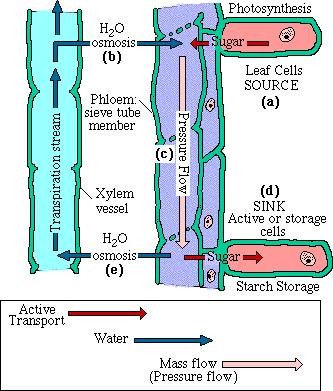
Fig.10. Pressure flow hypothesis or Munch hypothesis